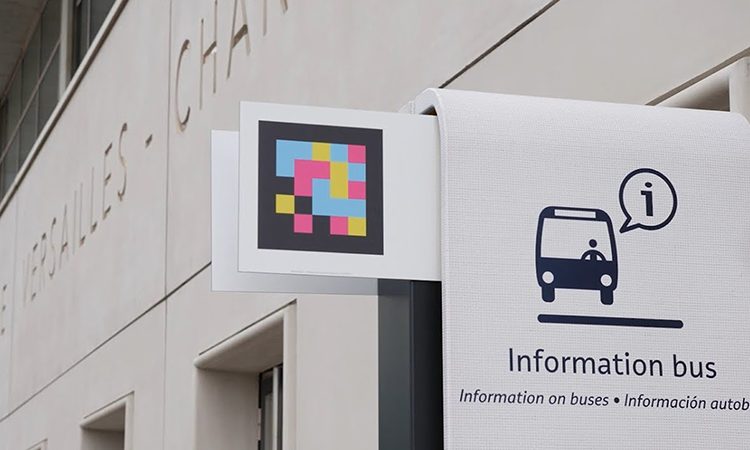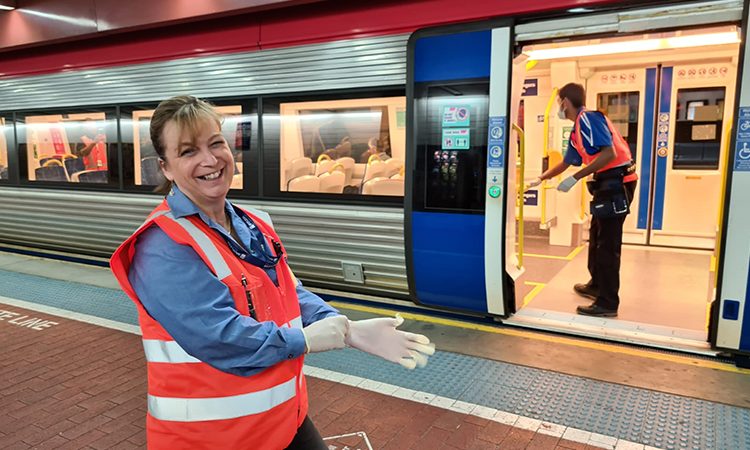Driving inclusivity: The immeasurable impact of technology-enabled passenger accessibility initiatives
- Like
- Digg
- Del
- Tumblr
- VKontakte
- Buffer
- Love This
- Odnoklassniki
- Meneame
- Blogger
- Amazon
- Yahoo Mail
- Gmail
- AOL
- Newsvine
- HackerNews
- Evernote
- MySpace
- Mail.ru
- Viadeo
- Line
- Comments
- Yummly
- SMS
- Viber
- Telegram
- Subscribe
- Skype
- Facebook Messenger
- Kakao
- LiveJournal
- Yammer
- Edgar
- Fintel
- Mix
- Instapaper
- Copy Link
Posted: 19 December 2023 | Alistair Gordon - Keolis UK | No comments yet
Alistair Gordon, CEO of Keolis UK, discusses the pivotal role of ongoing innovation, community engagement and strategic partnerships in advancing the company’s commitment to universal accessibility, ensuring that public transportation becomes a seamless and inclusive experience for individuals with diverse needs and abilities.


Credit: Keolis Group
Being able to get to where you need to be is vital. Here at Keolis, it has been our long-term priority to ensure that everyone can use our public transport networks around the world, no matter how vulnerable they may be. This commitment involves research, adapting infrastructures, tailoring services to individual needs and exploring technological solutions.
No ‘one size fits all’ approach
By recognising that vulnerabilities, whether temporary or permanent, can impact anyone, we make it a priority for our transport to be universally accommodating, understanding that there is no ‘one size fits all’ solution”
This means that we’re committed to making sure that every person can access their nearest transport networks. Our dedication to inclusivity acknowledges the diverse challenges that individuals face – whether that’s visible issues, like wheelchair use, or hidden ones, like illiteracy or digital technology struggles. By recognising that vulnerabilities, whether temporary or permanent, can impact anyone, we make it a priority for our transport to be universally accommodating, understanding that there is no ‘one size fits all’ solution.
Since 2007, we’ve been actively identifying vulnerabilities through the Keoscopie Mobility Observatory. This initiative has delved into the impact of illiteracy, the challenges that are faced by older passengers and the challenges that those on low incomes face when accessing public transport. We’ve also been focused on studying physical and sensory challenges, which includes addressing the challenges faced by older people and those with long-term conditions. This research has helped to inform the measures that we have put in place to bolster accessibility in our transport networks.
Training employees and adapting infrastructure
Achieving accessibility for all involves comprehensive employee training and awareness, something that we have implemented through the “UNIK approach'”
Achieving accessibility for all involves comprehensive employee training and awareness, something that we have implemented through the ‘UNIK approach’, an internal policy putting the group’s accessibility promises into practice and guiding the initiatives developed by our subsidiaries.
For example, in Adelaide and New South Wales, Keolis Downer’s Passenger Service Assistants have been trained by professional guide dog trainers to assist blind or visually impaired passengers. They also participate in the Sunflower Lanyard initiative, in which passengers wearing the Sunflower armband are quietly signalling to the driver that they may need more time or assistance during their journey.
Elsewhere, in Curitiba, Brazil, buses have been designed at platform height for more than 30 years to make it easier for passengers to get on and off.
And in Melbourne, Australia, a number is attached to each tram station name, offering a universal solution for the visually impaired, tourists and those with language difficulties.
These examples highlight the progress in creating more accessible public transport, including assistance services, adapted infrastructure and simplified signage.


Credit: Keolis Downer
Tailor-made services
As for less visible vulnerabilities, they are not neglected, but often require more human than technological assistance”
Beyond this, certain vulnerable passengers may need more tailor-made services.
In Rennes, France, and in the 43 municipalities of the metropolis, Handistar provides dedicated and flexible door-to-door transport for people in wheelchairs or with visual impairments. The service allows booking up to one hour before departure, operated 364 days a year, and there is no fee attached.
As for less visible vulnerabilities, they are not neglected, but often require more human than technological assistance. For example, in London, the ‘Back on Track’ social inclusion programme, active until the summer of 2023, aimed to enable passengers that were facing mental health issues, isolation, loneliness or language barriers to travel safely and independently on the Docklands Light Railway (DLR) network. Formed in collaboration with the East London NHS Foundation Trust, the programme involved a dedicated team of local ambassadors who organised tailored travel solutions to maximise accessibility.
Technological support
Digital technology… enhance accessibility by assisting customer journeys and enabling users to choose the most suitable mode of transport for them”
Digital technology, such as Mobility-as-a-Service (MaaS) apps, enhance accessibility by assisting customer journeys and enabling users to choose the most suitable mode of transport for them.
In Besançon, France, for example, an app developed by Ezymob assists blind and visually impaired passengers by using artificial intelligence (AI) to identify vehicle doors, guide passengers to access points, detect available seats and provide audio guidance for complex interchanges.
We’re also currently testing the NaviLens solution to help visually impaired passengers in several cities in France and London. It uses a smartphone and ‘augmented’ QR codes along customer journeys. Paired with an application that allows voice guidance, visually impaired passengers can pick up QR codes, placed on the ground or on supports, even at a distance, and listen to voice announcements giving static information, including location and stop names, alongside real-time timetables and disruption updates.
Furthermore, in several French cities, a partnership with Elioz enables deaf and hard of hearing passengers to plan trips by engaging with advisors freely through their computer or smartphone. The communication options include French sign language, completed spoken French (LFPC) or real-time transcription of speech.
In addition to technology-orientated solutions, we are also developing demand-responsive transport (DRT) to meet the needs of those who are struggling economically.
Helping disadvantaged passengers
No matter what vulnerability a passenger may be facing, we’re committed to meeting our mission to make sure that services are truly accessible for everyone”
To address the needs of economically disadvantaged individuals, we are focusing on structuring services with timetables adapted to work constraints, including early morning and late-night options. Inter-communal services are being designed for activities like shopping, taking children to the doctor, or visiting the swimming pool on Sundays. On top of this, we are always looking to combine these services, where possible, with equitable fares.
So, no matter what vulnerability a passenger may be facing, we’re committed to meeting our mission to make sure that services are truly accessible for everyone.


Related topics
Passenger Accessibility, Passenger Experience, Public Transport
Related modes
Rail
Related countries
Australia, Brazil, France, United Kingdom
Related organisations
Docklands Light Railway (DLR), Manchester Metrolink
Related people
Alistair Gordon







